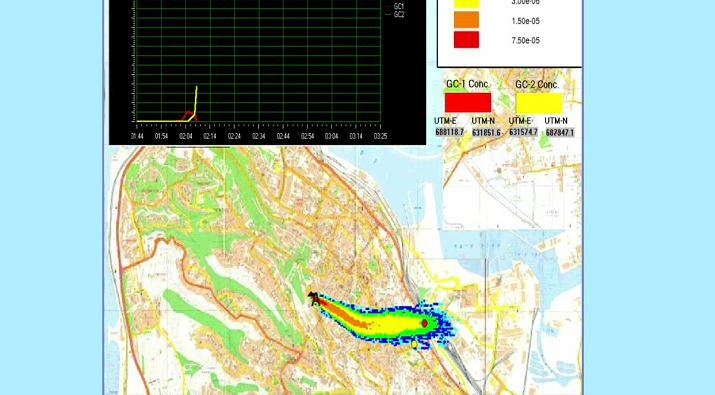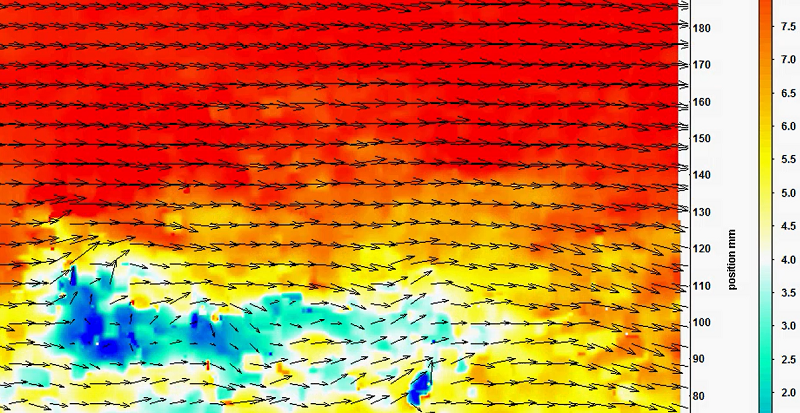The atmospheric transport and dispersion (T&D) of hazardous materials is investigated, and predictions for T&D in open and enclosed environments are made with the aid of numerical models and field measurements.
T&D modeling in open environments ranges from our in-house developed simple plume models, through puff models (e.g., CALPUFF), to our in-house developed Lagrangian stochastic particle dispersion models.
The Lagrangian stochastic modeling approach is unique in its ability to consistently model for non-homogeneous scenarios such as complex canopies over topography and explicitly include turbulent information as well as short range dispersion and non-Gaussian turbulence. These numerical models are validated against meteorological measurements.
Techniques that couple T&D models with meteorological input, and in-situ and stand-off concentration observations provide estimates for the hazardous material source location and strength.
Our in-house T&D models provide clear cut advantage for dealing with wide range of physical scenarios where standard modeling approach fails.
This set of models allows to provide solutions for wide range of physical scenarios where other off the shelf models fail. Among such scenarios are complex terrain and urban environment that are of notorious difficulty.
Additional expertise is Indoor T&D modelling which has been investigated experimentally and modeled with state-of-the-art Computational fluid-dynamics (CFD) techniques, with models such as FLUENT and CONTAM.


Movie: - Lagrangian stochastic model prediction and mobile gas chromatographs (GC) during the Haifa 2009 tracer campaign


Movie: Particle Image velocimetry measurement of flow field in our wind tunnel
Links:
Risk Assessment
Meteorological Modeling
Environmental Wind Tunnel Laboratory
Detection and Identification